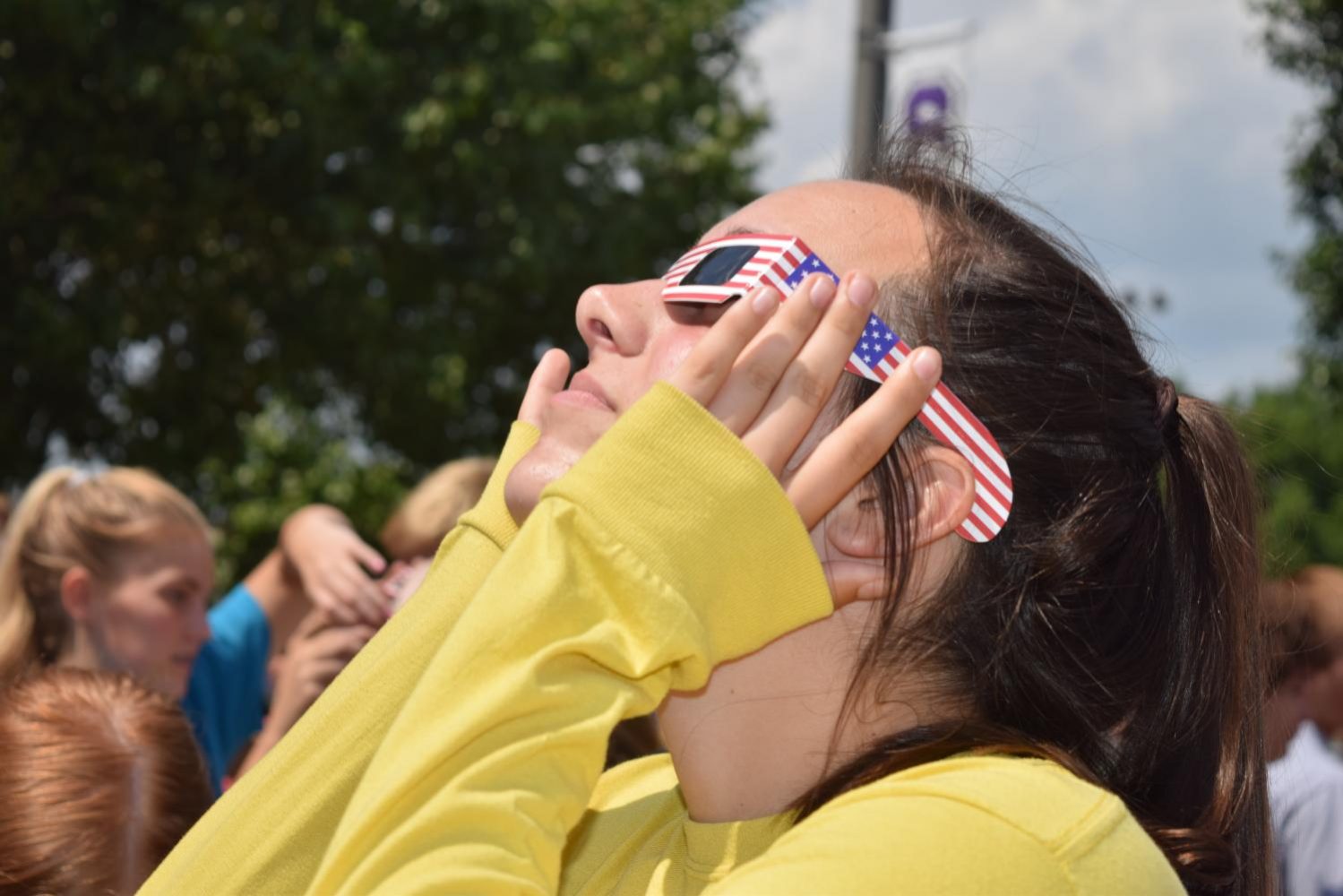Searching for the Solar Eclipse
August 29, 2017
On August 21, 2017 the moon passed in front of the sun creating what is known as a solar eclipse. Mr. Cobb’s science classes had the opportunity to go outside and view the eclipse. There are two types of eclipses, a solar eclipse and a lunar eclipse. A lunar eclipse is when the moon darkens due to earth’s shadow. Solar eclipses have different time occurrences but are often spaced by at least a few years. According to eclipse2017.nasa.gov there may be up to three lunar eclipses per year, but some years there may be none.
There was mention of not looking directly at the sun during the eclipse and it was with reason. Earth Science teacher, Mr.Cobb stated, “Our sun produces very intense ultraviolet radiation. Some of this radiation reaches Earth’s surface. We are affected by that radiation in different ways: our bodies uses it to produce vitamin D, it can cause sunburns, and it can damage the retina in our eyes if we look directly at the sun.” He took some students from his Earth Science outside to view the eclipse on Monday August 21, 2017 along with other teachers. The students and teachers used some special eclipse glasses to view the event so they would not damage their eyes. Cobb set up his telescope for special viewing of the eclipse as well.
Junior Amanda Able explained, “There is only 93 percent coverage of the sun from the moon in Indiana.” Able stated “(she) didn’t think it was going to get very dark out but it would be a little dim.” Other viewers of the eclipse like Junior Kasidy Montgomery agreed saying it was “hazy” outdoors.


